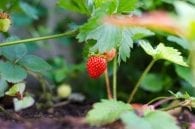Children have a natural passion and fascination with growing. They love to notice plants in a home garden grow, or how big the new family pet is growing. And of course they love to see how they themselves grow throughout the months and years. One of my favorite strategies to encourage healthy eating leans into this natural excitement that kids have for growing: Teach kids about the importance of “grow foods”.
Teach your child that, simply put, “grow foods” are the healthy foods that help us grow. “Just like our plants in our garden need good food (soil, fertilizer) to help them grow, and our puppy needs good food to help him grow, our bodies need good food to help us grow!” Explain that the most nutritious foods will help us grow the best! Make a regular habit out of discussing the healthy benefits of vegetables, fruits, and healthy proteins, fats, and carbohydrates.
NUTRITIP: Grow Foods for Children
Between 3 and 4 years of age, children can begin to comprehend which foods are the most nutritious and why. We would often say to our children, “Make sure you eat the food that makes you grow first.”
“Grow” foods would be:
• Seafood (see Which Fish are Most Nutritious?)
• Veggies
• Whole Grains
• Spices (specifically turmeric, cinnamon, and coriander)
• Fruit
One of the moms in our pediatric practice shared this story with me: The mom, Kathy, consistently called the healthy food “grow food,” so her son Matthew naturally learned to think of it as “grow food” too. Matthew became very passionate about recognizing grow foods, to the extent that when a piece of junk food found its way into their home, the child quickly identified this food as a foreign intruder. One day 4-year-old Matthew found some white bread in their otherwise whole wheat home (a sandwich left by one of his friends). Matthew asked his mom why his friend ate white bread, “Doesn’t she need to grow anymore?”
Make “grow foods” relevant.
You can extend this strategy by making “grow foods” relevant to your child’s interests. Call healthy foods “soccer foods,” “baseball foods,” or “ballet foods” and emphasize the fact that these foods will help your child excel in his or her preferred interests. The better your body and mind is fueled, the better your performance.

